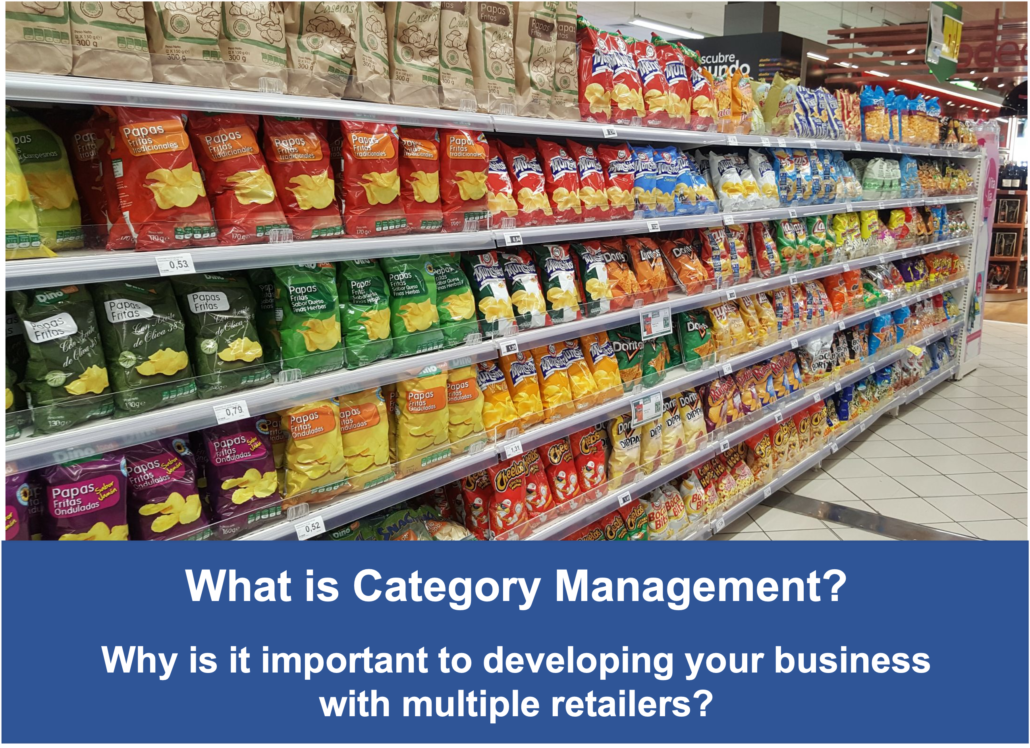Category Management Definition
Category Management is a systematic, disciplined approach used by retailers to manage a product category as a strategic business unit. The main aim is to deliver turnover and profitability targets whilst bringing benefits to the shoppers of that category.
What is a product category?
A category is a group of similar products. For example, Cereals, Household Cleaners or Vitamins & Supplements.
Why is it important to understand Category Management?
Ensuring that you understand Category Management and using it effectively is critical to the success of your Fast-Moving Consumer Goods brand. The three most important reasons for this are:
- The major retail customers you want to target all focus on growing their categories instead of brands. Therefore, its important to be able to understand and speak the same Category Management language. This will help you build your business with them.
- As shoppers, we have been trained to think about the solutions we seek based on categories of products rather than brands. This means that initially, we tend to think in generic terms. For example do we need Bread or Cheese or Detergent. However, once we arrive at the category, we start to think in more detail. For example, which brand do we want, what price are we willing to pay, is it organic.
- Understanding the series of decisions consumers make when shopping your category is important. To do this requires detailed category shopper data. Good data will provide a better understanding of how and why consumers shop the category in the way that they do. As a result you will be able to see how to more effectively market your products to consumers shopping your category.
How will understanding Category Management help?
- Understanding and speaking the same Category Management language as your customers will lead to a much more effective dialogue with your buyers. This will help strengthen your buyer relationships and drive growth for your business.
- It will also mean a better understanding of your shoppers. This will enable you to market more effectively to them and provide the solutions they are looking for.
- Being able to organise and maintain category data will also naturally reveal insights and trends. This will enable you to ensure that your brand is still meeting the consumer’s needs. It may also lead to new oppportunities for your brand as it often it also reveals unmet consumer needs.
What are the key steps?
Category Management is an eight-step process:
1. Define the category
This is probably the most important step. How you define the category will have a significant impact on the final output. In order to maximise results you need to ensure you have a detailed understanding of the retailer. This means understanding their objectives, their customers and the consumers who buy your brand.
A key question is how customers shop the category. Using a consumer decision tree will help define the category. It will also help identify the sequence of choices consumers make in selecting the products they buy from the category. Do they shop by leading brands, secondary or tertiary brands? How important is quality, flavour, or packaging type? How many related products are bought at the same time? For example, if they buy a detergent, do they also buy a softener?
2. What’s the Role of the Category?
In Category Management the importance of the category is determined by the role it is intended to play.
Categories can play a variety of roles. These are based on whether the category is defined as being destination, routine, seasonal or convenience.
Roles include:
- Bring new customers to the store
- Generate more foot traffic
- Meet routine consumer needs
- Be a destination for seasonal or occasional purchases.
- Provide a one-stop shop for everything.
3. Assessing the Category
Now it’s time to get a more detailed understanding of the category. Using the market and consumer data you can now build a picture of sales by category, sub-category, brand and individual product. Like all good Category Management analysis, it will take time, but done well it will pay dividends in the end.
Your analysis should also look at the effect of promotions. For example, do consumers only buy products when they are on offer? Do they switch from one brand to another when offers are available? Is there evidence that promotions are attracting new consumers? Are there new trends for example moving towards environmentally friendly alternatives?
This stage is often managed by what are called Category Captains. These are usually large, often blue-chip brands that represent a significant proportion of the category sales. These companies have the resources and usually have teams dedicated to Category Management.
4. Scorecard
This step combines the above analysis with each retailers strategy to deliver category goals and objectives. The retailer’s strategy should also align with corporate goals as well as those of key suppliers. The key elements of this include product assortment, pricing, in-store presentation & promotion. The scorecard monitors progress towards achieving
5. Category Strategy
This sets out what is needed to achieve the role defined for the category.
Examples of category strategies are;
Traffic Builder
A traffic builder is something that draws consumers into the store to shop the category. One example is an item with a high market share advertised at a special price. Another example is a product with high sales that is frequently purchased and promoted.
Transaction Builder
The aim here is to increase consumer spend on each visit. Sometimes referred to as basket size.
Aggressive pricing and promotion of larger sizes or multi packs is the most common tool used to achieve this. Using multi buy offers like 3 for 2 or buy one get the second item half price encourages consumers to buy more. Special offers on higher priced products encourages switching to more expensive items.
Profit Generator
The objective here is to increase category profits while ensuring prices remain competitive.
Normally products with a higher than average percentage margin or profit per unit are sued to achieve this. These might also be products with a high degree of loyalty and higher than average retail prices.
Share protector
Typically employed on selected, frequently purchased, high-priced items with high market penetration.
These are normally products that consumers buy every week and know the price of. This is a very expensive strategy in terms of profit impact so not often used.
6. Tactics in Category Management
These are the specific tactics and actions required to deliver the chosen category strategies.
This includes marketing activities, types of promotions and assortment changes as well as the communication strategy and changes to the planogram or fixture layout.
This is the stage where new planograms and range assortments are planned. In the UK this is called a range review. As a supplier or potential supplier, this is your opportunity to influence the outcome and secure new business.
7. Implementation
This is the step that brings everything to life. It’s also where responsibilities are assigned to implement the planned changes.
The combination of a large retail organisation and lots of different suppliers creates many variables. Success at this stage requires all parties to play their part and implement in full and on time.
8. Review Performance
Reviewing, analysing and measuring the results of the latest change is an ongoing process.
New products recently introduced will typically have around 12 weeks to prove themselves. As a result, if your brand isn’t achieving acceptable category sales, its likely that it will be earmarked for removal at the next review. This is why the first 12 weeks are so important. You need to be willing to over invest at the start in order to secure your brands place in the category.
If you found this information useful please like it and share it.
If you would like to learn more about our services visit our website www.thesandmp.com If you need help with your marketing send us an email info@thesandmp.com to help us understand how we can help.

